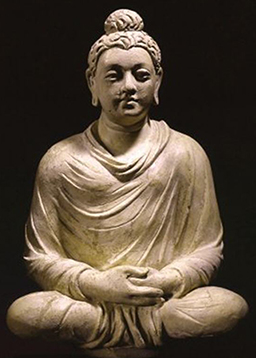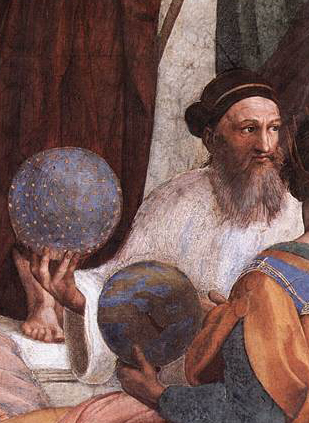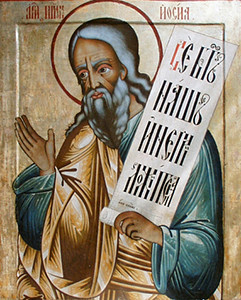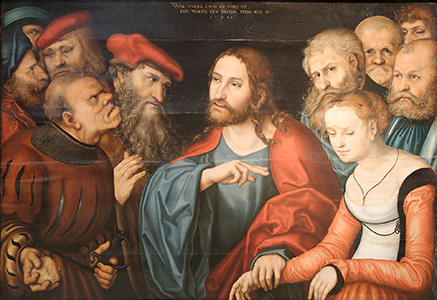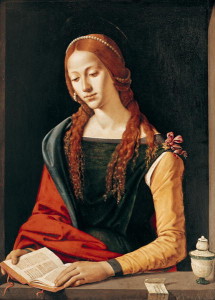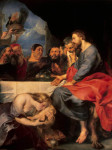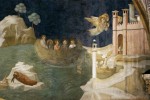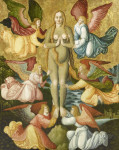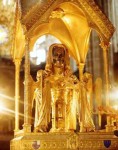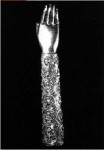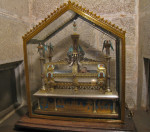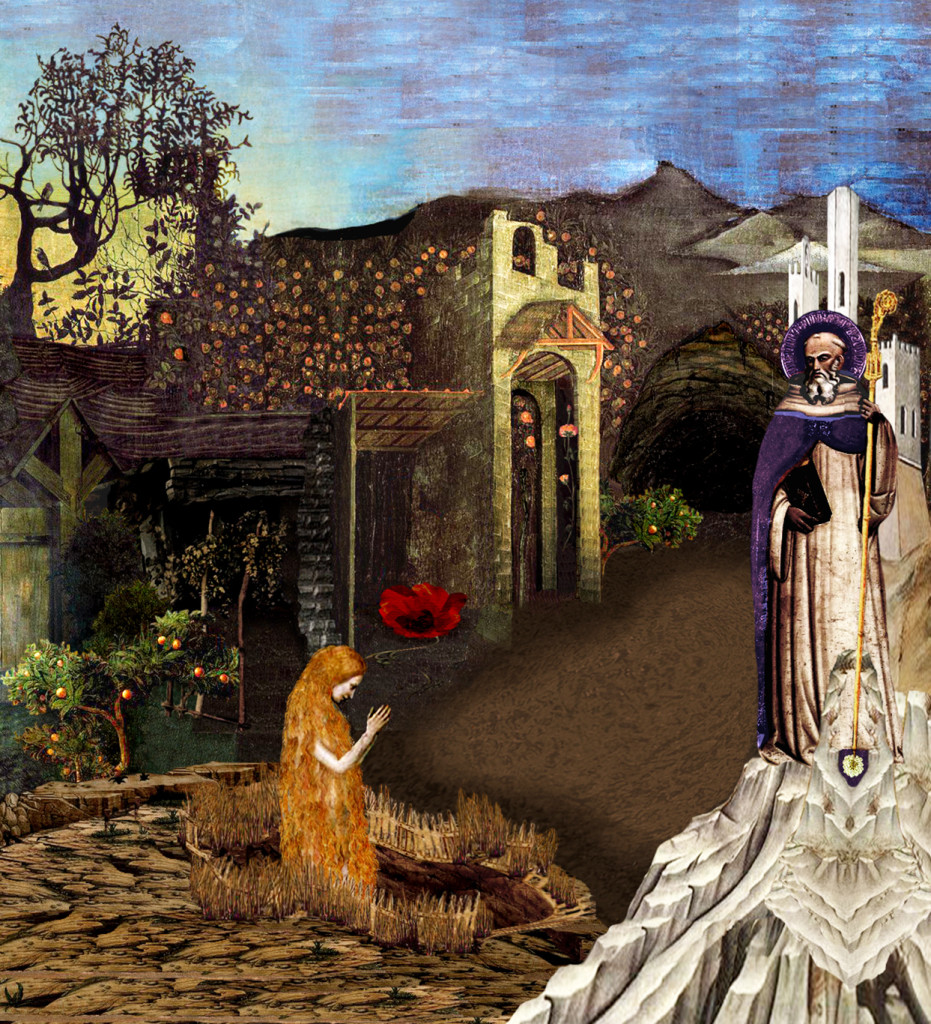“Grace dances . . . dance, all of you!”
—The Acts of John
Heresy vs orthodoxy is the stuff that breeds wars, and Church history is full of it. Without getting into a discussion of Church councils and the creation of the Christian canon, I’d like to look at a 2nd C gnostic gospel that was pronounced heretical—and see what it might say to us today.
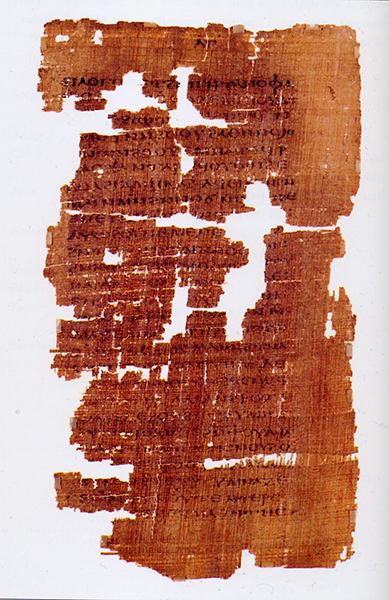

The Acts of John was condemned by Church fathers as docetic (docetism is the belief that Jesus’ humanity and physical body were an illusion). To modern eyes John can be a peculiar book, full of bizarre notions and unappealing ideas—particularly its contention that the spirit of Christ abandoned the man Jesus to suffer on the cross alone, while the divine essence stood apart, untouched by pain.
But if you can set that notion aside, The Acts of John offers a number of intriguing thoughts. Perhaps most familiar is a lovely passage known as “The Circle Dance of the Cross,” in which, the night before his death, Jesus invites all his disciples to form a circle and dance around him. Those of you who have read Yeshua’s Cat may recognize the last four lines of the quote below as part of Yeshua’s conversation with his mother before he left Nazareth for the last time.

Here is an edited version of the original text:
[Jesus] stood in the circle’s center and said, “Answer ‘Amen’ to everything I say.” Then he began to sing a hymn, saying:
“Glory be to you, Father.”
And we, moving around him in a ring, answered him: “Amen.”
“We praise you, O Father; we give thanks to you, O Light where darkness cannot dwell.”
“Amen.”
“I would be saved, and I would save.”
“Amen.”
“I would be freed, and I would free.”
“Amen.”
“I would be wounded, and I would wound.”
“Amen.”
“I would be born, and I would give birth.”
“Amen.”
“I would eat, and I would be eaten.”
“Amen.”
“I would hear, and I would be heard.”
“Amen.”
“I would be thought of, being wholly thought.”
“Amen.”
“I would be washed, and I would wash.”
“Amen.”
“Grace dances. I would pipe; dance, all of you.”
“Amen.”
“I would mourn: lament, all of you.”
“Amen . . .”
“The Whole on high takes part in our dancing.”
“Amen.”
“Whoever does not dance cannot understand what is coming to pass.”
“Amen.”
“I would flee, and I would stay.”
“Amen.”
“I would adorn, and I would be adorned.”
“Amen.”
“I would be united, and I would unite.”
“Amen . . .”
“A lamp am I to you who behold me.”
“Amen.”
“A mirror am I to you who perceive me.”
“Amen.”
“A door am I to you who knock at me.”
“Amen.”
“A way am I to you a wanderer . . . “
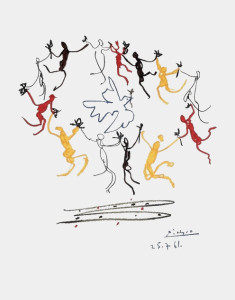
Christian mystics down through the centuries have used the metaphor of dance to describe the human relationship to God, and I found John’s Circle Dance delightful.
Well, I mused, if The Acts of John can include the Circle Dance, what else might I find? So I examined the book more closely. Another idea present throughout the book is that Jesus appeared in many different guises while he walked the earth. I must admit that John’s list allows for a few more possibilities than the canonical gospels: a child, a young handsome man, a youth just bearding, a middle-aged balding man, a small ugly man, a huge heavenly man, a being of whiteness and light, a man with a soft yielding body, a man whose body was hard as stone, a body firm to the touch, and a body with no physical solidity at all. John describes the significance of these guises with the words, “. . . his great grace, his unity that had many faces . . . “
Those words reminded me of recent critics in the search for the historical Jesus who point out that people of every age have tried to mold Jesus into their own ideal of who he should be—thus hopelessly muddying the waters for anyone trying to discern the true historical person.

But here’s my thought: what if Jesus’ message right from the beginning was intended to be a message for all ages and all people? What if his message always had access points that could lead people along diverse paths to the One through him? What if he included embryonic possibilities in his teaching that could support every positive interpretation ever put on his original message? Everything from human rights, the light within, and justice—to caring for the environment and liberation theology? What if most Christian heresies, while diverging from the mainstream, have a unique glimmer of this truth?
Unfortunately, we as humans too often seize on glimmers of truth as if they were the final and complete word of God rather than single facets. Just so the Church has long been at fault for trying to narrow Jesus’ message to fit their limited understanding, enclosing it within a box made to their order. In the hands of the Church, too often the multifaceted diamond of Jesus’ message has been transformed into a stony concretion in crumbling stone—frozen and trapped beneath masses of accumulated tradition.
“His unity that had many faces . . .” is one insight from The Acts of John that we might wish to heed. What if one of Jesus’ primary goals—long obscured by human ignorance—was to bring healing to the shattered images of the One, fragmented for so long among human cultures? What if he offered freedom, and the brilliant unity of God’s countenance, to all people—and we have warped them instead into shadow and condemnation?
Just a thought.

.
.




